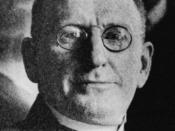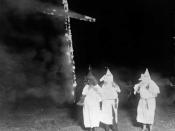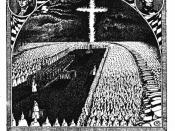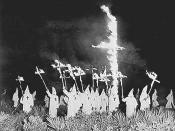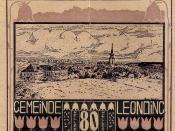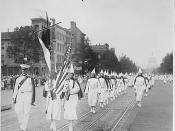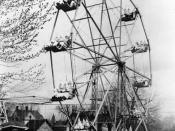sdf In the late eighteenth and early nineteenth centuries, American society was changing rapidly. Many of these changes helped produce the tension of the 1920's. The industrialization and mass-production techniques instituted drastically altered the lives of thousands of people. both their jobs and their lifestyles changed. because of industrialization, the urban population grew, and many new inventions were produced. the new fast-paced lifestyle loosened many of the old values people used to stand by strictly.
Along with industrialization, the invention of the automobile quickened American life and loosened its morals. People had more opportunity to get away and try new things. Because of the great age of radio, the new ideas were spread quickly and larger numbers were exposed to them. However, one of the greatest contributors to the 1920's as a peiod of tension was World War I. During the war, thousands of people endured great hardship and misery.
The nation was concentrating on war, not fun. After the return of the soldiers, people wanted some relief and enjoyment. This feeling came through in the revolutionary attitudes of the 1920's.
The new attitudes and inventions were evident in many aspectes of life. For instance, in Sinclair Lewis's Babbitt, published in 1922, he writes of "These standard advertised wares -- toothpastes, socks, tires, cameras, instantaneous hot-water- heaters --..." The new products had become the norm rather than the exception. Society had a great emphasis on being comfortable.
Another example of the dominance of new, looser morals came from marriage/divorce statistics. Up until the 1920's, the marriage rate had been growing much faster than the divorce rate. However, suddenly in the 1920's, fewer marriages occured, but more couples got divorced. This shows the emphasis on doing what one wanted, not what was accepted by society.
Tension between the old and new values occured every day. One of the great conflicts was the Scopes Monkey Trial. Not only was the trial a battle between fundamentalism and Darwinism, it was a fight between tradition and new social changes. The old belief was to accept what society dictated, such as Wm. J. Bryan's (the prosecuting attorney in the Monkey Trial) thought that "everything" in the Bible should be accepted as it is given there. This statement is recorded in The Worlds' Most Famous Trial: Tennessee Evolution Case, 1925, as is a retort by Bryan's opponent, Clarance Darrow, against blind acceptance. "Perfectly easy to believe that Jonah swallowed the whale?" Other manifestations of conflict are seen in Langston Hughes "The Negro Artist and the Racial Mountain," when he writes of the "revolt against weariness in a white world." He writes of the stress between the new artists and those who stick to the old traditions. Another revolt against the new liberalism came in the revival of the Ku Klux Klan. The Klan was the epitomy of old conservatism, not trying to understand or accept new values.
The tension during the 1920's allowed many people to release some of the feeling pent up during earlier times. As society formed its new beliefs and attitudes, some rebelled against these. Many conflicts occured, but they only served to emphasize the new course of American society.
